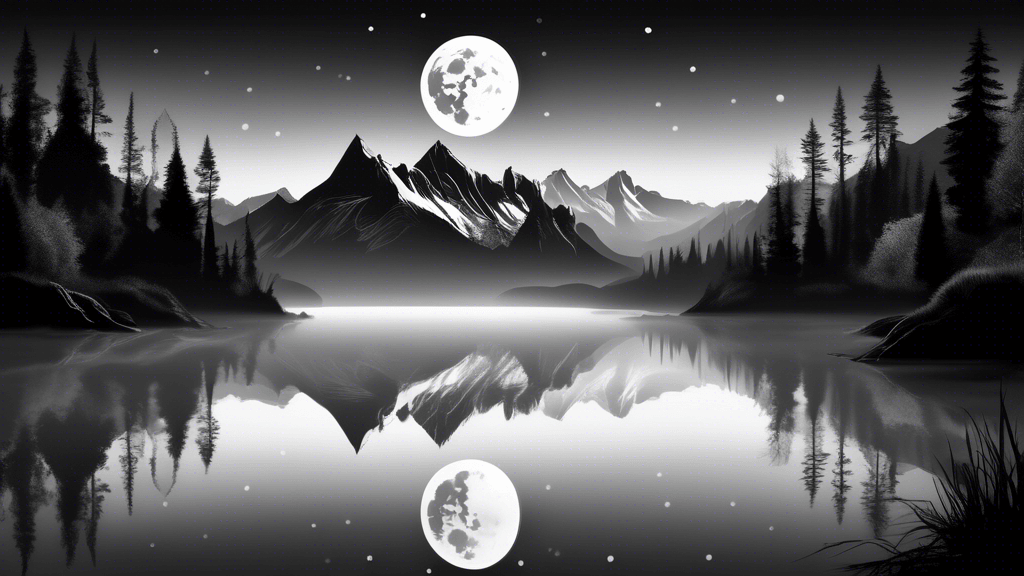
Exploring Shadows and Light: The Art of Black and White Landscape Photography
Share
The Essence of Black and White Landscape Photography
Why would a photographer choose to work with black and white in an era dominated by vibrant colors? Black and white photography strips down a scene to its fundamental aspects—texture, shape, and the very soul of the landscape. It emphasizes forms and lines, light and shadow, and the range of tones in between. In landscape photography, this can transform an ordinary scene into a stunning piece of art, stirring emotions and engaging viewers on a profound level.
The Timeless Allure of Monochrome
Black and white photography is not just about the absence of color. It’s a deliberate aesthetic choice that brings out different elements within the natural world. Consider the following data points:
- Black and white images can help emphasize textures and details that might be overlooked in color photographs.
- Monochrome landscapes encourage the viewer to see the world through a different perspective, focusing on composition, balance, and the interplay between light and shadow.
Prominent photographers like Ansel Adams and Dorothea Lange exploited the monochrome technique to great effect, capturing the raw beauty and stark contrasts of their environments. Adams, in particular, used strong tonal contrasts to create a sense of depth and scale in his photographs of the American West.
Mastering Shadows and Light in Monochrome
In black and white landscape photography, light isn't just a source of illumination—it's a building material. It shapes and defines the features of the landscape, from the darkest shadows to the brightest highlights. The right light can turn a mundane scene into a work of art, as landscape photography veteran Jack Curran once remarked. Here’s why light is crucial in black and white photography:
- Directional light can highlight textures, creating a tactile element within the composition.
- Soft light can smooth out contrasts, offering a more ethereal and gentle representation of the scene.
- Harsh light creates strong contrasts, which are paramount in creating dramatic and compelling images.
The choice and control of lighting conditions dictate the mood of the photograph and guide the viewer's eye through the image. It’s about finding the balance between the dark and the light, crafting a visual scene that feels balanced yet dynamic.
Techniques and Tips for Stellar Monochrome Landscapes
Effective black and white landscape photography goes beyond snapping random shots without color. It requires vision, patience, and technique. Here are some practical tips to elevate your black and white landscape images:
- Use of Filters: Polarizing filters can enhance the sky’s contrast against clouds, while red filters can dramatize a blue sky in black and white.
- Long Exposures: This technique is particularly effective with moving clouds or water, as it can create a smooth contrast against solid elements like rocks and trees.
- High Dynamic Range (HDR): Combining several exposures of the same scene can capture greater dynamic range than the camera could in a single frame.
Each of these techniques can help accentuate the elements that make monochrome photography compelling, but the key lies in experimentation and continuous learning.
Environmental Implications and Ethical Considerations
In the pursuit of capturing nature’s timeless beauty, it is important to address the ethical considerations around landscape photography. Environmental conservation should be at the forefront of any landscape photographer's mind, ensuring that we preserve the natural scenes we aim to immortalize in our images. Practicing principles like 'leave no trace', respecting wildlife and natural habitats, and educating others about the importance of conservation through your work are vital responsibilities.
“We do not inherit the earth from our ancestors; we borrow it from our children,” a quote often attributed to native American wisdom, illuminates the responsibility inherent in landscape photography. Capturing images responsibly and with respect to the environment ensures that future generations can enjoy and cherish these landscapes just as we do.
Conclusion: The Captivating Journey Continues
Black and white landscape photography is not just a technique; it’s a profound artistic expression that connects the viewer with the natural world in its most elemental form. By mastering the interplay of light and shadow, photographers can create compelling, powerful images that not only depict the beauty of a landscape but also tell a story and evoke emotions.
Are you ready to embrace the challenge and become a part of this enduring artistic tradition? Grab your camera, step into nature, and start exploring the incredible potential of black and white landscape photography today.





